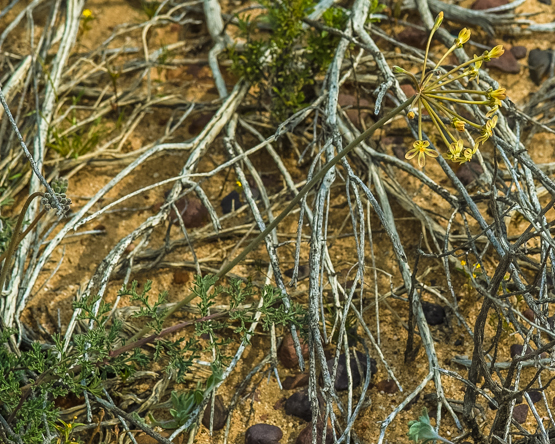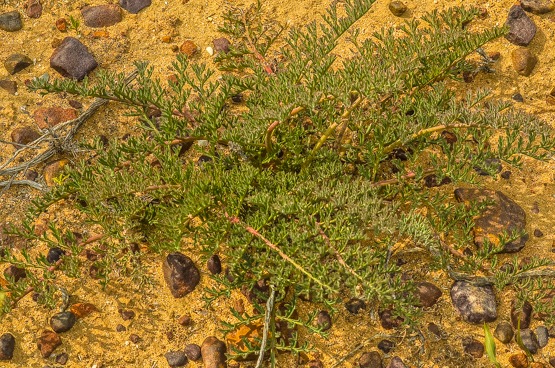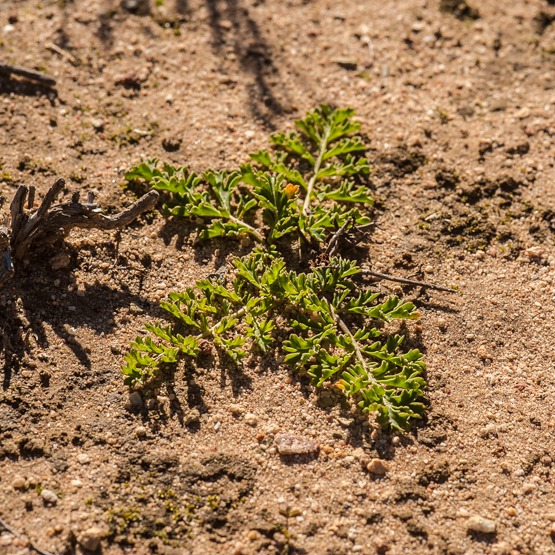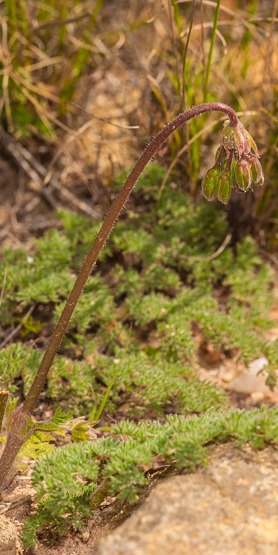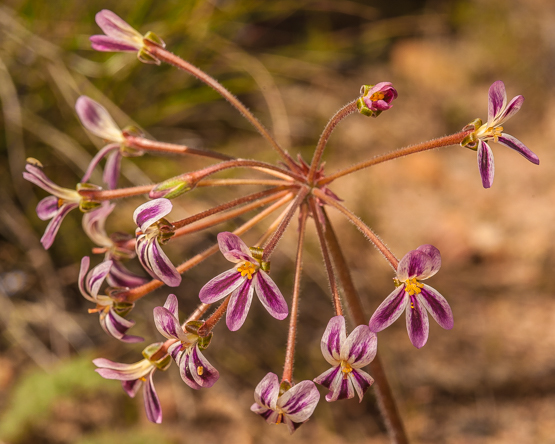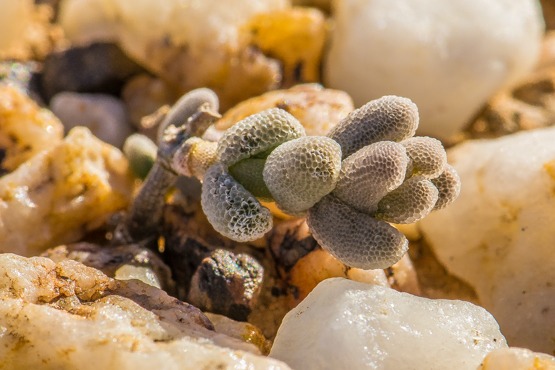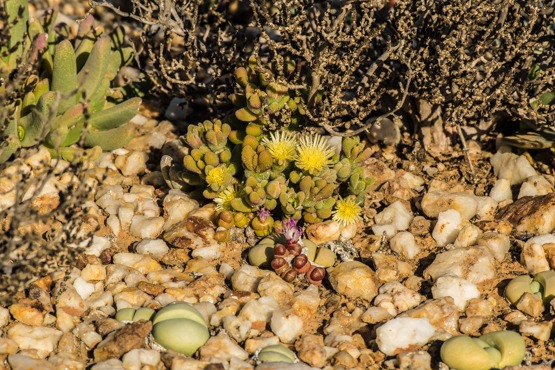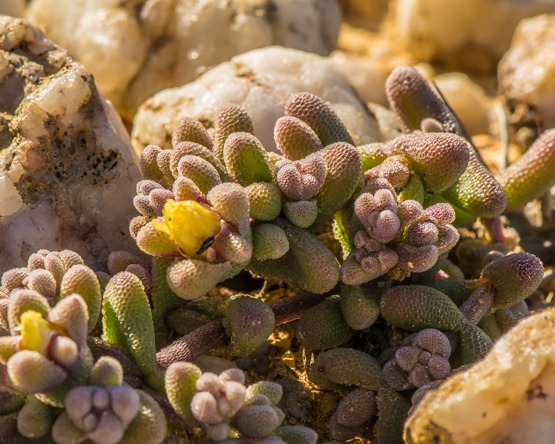(Night-scented pelargonium; Kaneeltjie; Rooiwortel)
This is one of the first recorded Pelargoniums to reach Europe from South Africa nearly four hundred years ago (1632). The name triste refers to the dull colours of the flowers.
It has a very short stem above ground and a large woody tuber – as well as several smaller ones- underground. The leaves are 10-45 x 5-15 cm large and resemble those of a carrot; they are covered with fine hairs and deeply divided into narrow segments.
From August to February the inflorescences are produced, each having a very long stalk (to 30 cm or more tall) with 6-20 flowers. These are usually brownish-purple with a broad yellow margin, but sometimes cream-coloured, yellowish- green or brown, about 1.5 cm across; at night they emit a scent of either cinnamon or clove.
Usually the plants are found in sandy soils – often in colonies as a result of the spreading tubers- in a strip running parallel to the coast from Steinkopf in Namaqualand to Albertinia in the Southern Cape.
A decoction from the tuber is sometimes used as an astringent to stop diarrhoea or dysentery.
